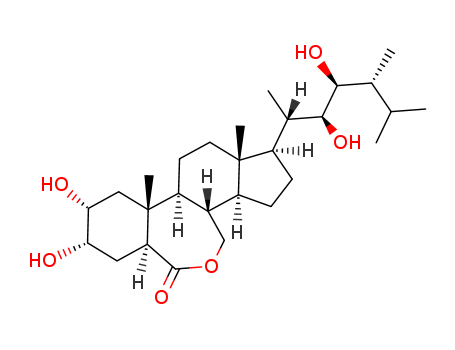Multi-step reaction with 9 steps
1.1: triethylamine / diethyl ether / 0.25 h / 0 °C / Inert atmosphere
2.1: lithium aluminium tetrahydride / diethyl ether / 2 h / 0 - 20 °C / Inert atmosphere
3.1: n-butyllithium / tetrahydrofuran / 0.25 h / -78 - 20 °C / Inert atmosphere
3.2: 0.03 h / -78 °C / Inert atmosphere
4.1: sodium chlorite; sodium dihydrogenphosphate; 2-methyl-but-2-ene / water; ethanol / 0.08 h / 0 °C / Inert atmosphere
5.1: 2,6-dimethylpyridine / dichloromethane / 0.5 h / 0 °C / Inert atmosphere
6.1: diisobutylaluminium hydride / toluene / 0.25 h / -78 °C / Inert atmosphere
7.1: 2,2,6,6-Tetramethyl-1-piperidinyloxy free radical; sodium chlorite; potassium bromide / aq. phosphate buffer; dichloromethane / 1.17 h / 0 °C / pH 7 / Inert atmosphere
8.1: pyridinium p-toluenesulfonate / methanol / 0.17 h / 20 °C / Inert atmosphere
9.1: acetic acid / water / 1 h / 60 °C
With
2,6-dimethylpyridine; sodium chlorite; sodium dihydrogenphosphate; lithium aluminium tetrahydride; n-butyllithium; 2-methyl-but-2-ene; 2,2,6,6-Tetramethyl-1-piperidinyloxy free radical; pyridinium p-toluenesulfonate; diisobutylaluminium hydride; acetic acid; triethylamine; potassium bromide;
In
tetrahydrofuran; methanol; aq. phosphate buffer; diethyl ether; ethanol; dichloromethane; water; toluene;
DOI:10.1039/c4ob02197e





